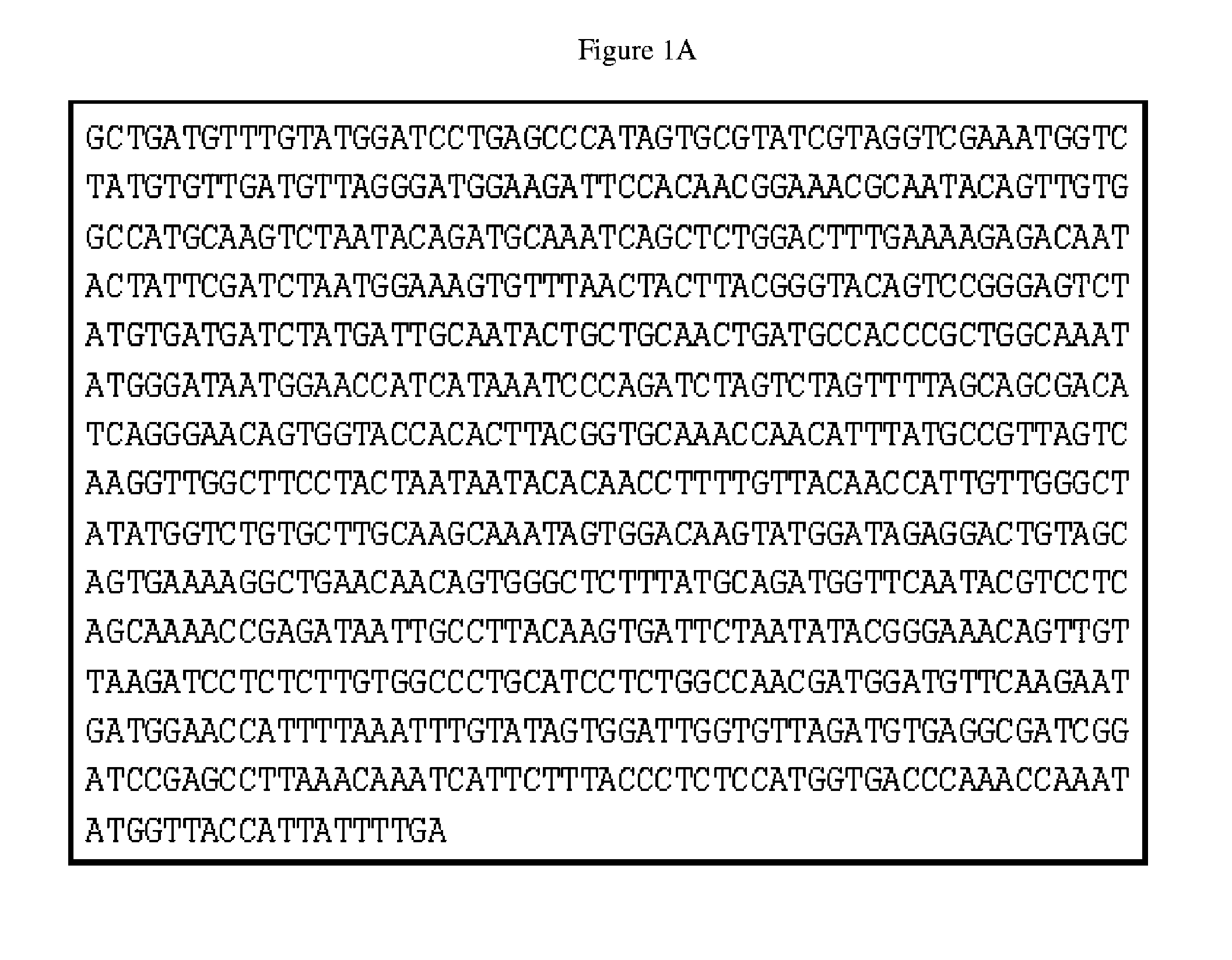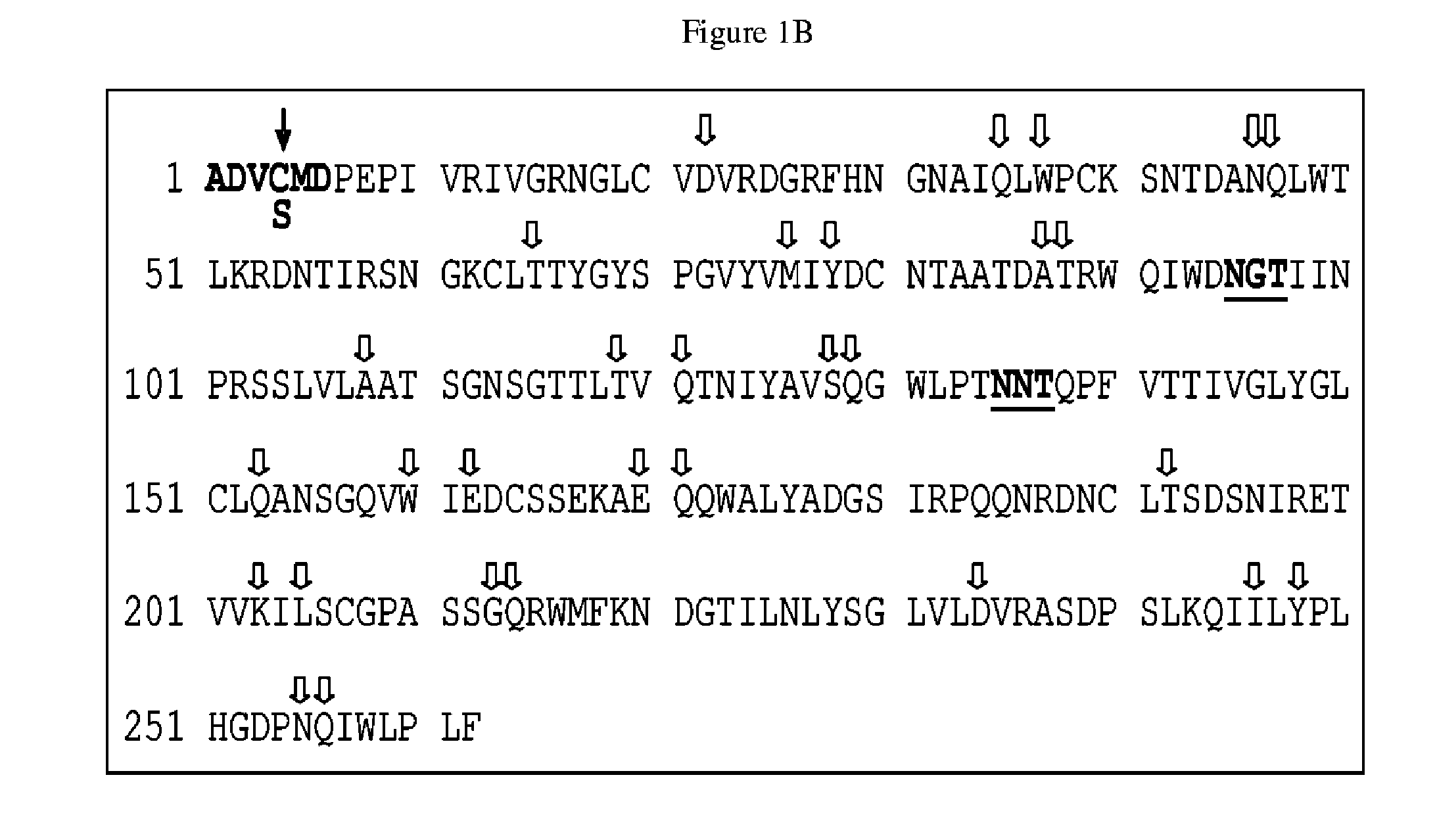Methods of delivery of molecules to cells using a ricin subunit and compositions relating to same
a technology of ricin and subunit, applied in the direction of recombinant dna-technology, peptide/protein ingredients, peptide sources, etc., can solve the problems of toxins remaining, challenging the ability of the host or target cell to obtain adequate expression levels of proteins,
- Summary
- Abstract
- Description
- Claims
- Application Information
AI Technical Summary
Benefits of technology
Problems solved by technology
Method used
Image
Examples
example 1
[0090]Nature has evolved clever ways in which to deliver toxic proteins across the barrier of the cell membrane. Some of these toxins, such as the type II ribosome inactivating protein (RIP) ricin from the seeds of the castor bean plant (Ricinus communis), must navigate through labyrinthine paths once inside the cell to reach their substrate. In the case of ricin, it must reach the ribosomes which reside in the cytoplasm. Below is demonstrated that, by taking advantage of certain aspects of ricin function, such as the uptake and trafficking within target cells, while eliminating the toxic effects of ribosome inactivation, it is possible to create a safe and effective means to deliver proteins to cells which otherwise are not able pass the outer membrane barrier.
[0091]Ricin toxin is a heterodimeric protein consisting of the 32 kD N-glycosidase A-chain (RTA) which mediates ricin toxicity and the 32 kD galactose / N-acetyl-galactosamine-specific lectin B-chain (RTB), connected via a sing...
example 2
[0160]In Example 1 is demonstrated that attachment of small molecule and protein payloads to a recombinant ricin B-chain (rRTB) carrier through chemical conjugation at primary amine groups, biotin / streptavidin interactions or direct genetic fusion resulted in a flexible and efficient platform for delivery across outer cell membranes. The following experiment demonstrates improvement of the RTB-based carrier system by the development of a “capture and carry” coupling mechanism between carrier and payload. Ideally, one would want to attach payload proteins to the carrier through a breakable interaction. Allowing the payload and carrier to separate once inside the cell may give more flexibility and therefore a wider range of possible applications. Disulfide bonds are broken under very specific conditions, either through chemical reduction or enzyme mediated mechanisms. The major drawback of direct genetic fusion of carrier and payload proteins is the strength of the peptide bond, which...
example 3
[0225]In the course of experiments aiming to engineer the ricin B lectin (RTB) into a flexible and efficient platform for protein delivery, a pattern of breakdown of RTB-fusion proteins recombinantly produced in Nicotiana benthamiana emerged. This breakdown was also observed with RTB-fusions produced in stably transformed Nicotiana tobacum suggesting it is not specific to either the transient expression system or to N. benthamiana. Fusions in which RTB constituted the C-terminal partner exhibited a near-predictable pattern, in which the large majority of lactose-binding product migrated to the same position on SDS-PAGE analysis as RTB from castor bean (cbRTB) and rRTB (˜32 kD). Only a fraction of recovered recombinant protein was of the predicted molecular weight, that being the sum of the N-terminal fusion partner plus RTB. This pattern of breakdown was observed regardless of the nature of the N-terminal fusion partner; proteins as diverse as immunoglobulin (Ig) domains, interleuki...
PUM
| Property | Measurement | Unit |
|---|---|---|
| humidity | aaaaa | aaaaa |
| pH | aaaaa | aaaaa |
| pH | aaaaa | aaaaa |
Abstract
Description
Claims
Application Information
 Login to View More
Login to View More - R&D
- Intellectual Property
- Life Sciences
- Materials
- Tech Scout
- Unparalleled Data Quality
- Higher Quality Content
- 60% Fewer Hallucinations
Browse by: Latest US Patents, China's latest patents, Technical Efficacy Thesaurus, Application Domain, Technology Topic, Popular Technical Reports.
© 2025 PatSnap. All rights reserved.Legal|Privacy policy|Modern Slavery Act Transparency Statement|Sitemap|About US| Contact US: help@patsnap.com



